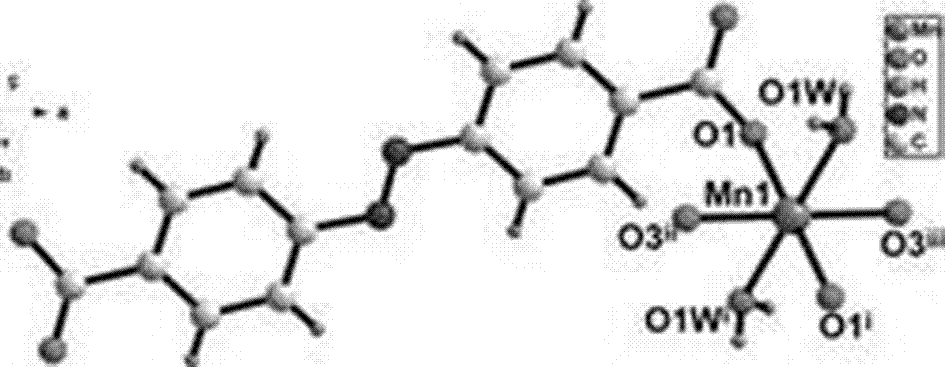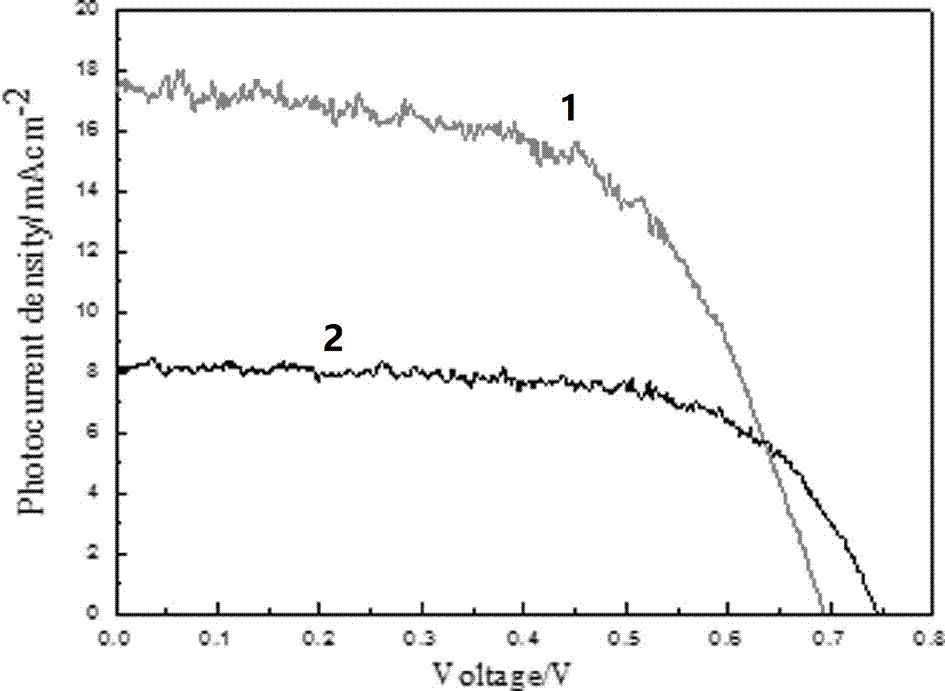Preparation method of dye-sensitized solar cell photoanode based on azo manganese complex modified TiO<2>
A technology of solar cells and complexes, applied in photosensitive devices, circuits, capacitors, etc., can solve the problems of improved photoelectric conversion efficiency, weak absorption intensity, and low conduction band efficiency
- Summary
- Abstract
- Description
- Claims
- Application Information
AI Technical Summary
Problems solved by technology
Method used
Image
Examples
Embodiment approach 1
[0011] Embodiment 1: Assembly of co-sensitized solar cells: the blue light material [Mn(azobenzene-4,4'-dicarboxylic acid) 0.5 (H 2 O)] n The complex was dissolved in ethanol solvent to obtain 5 × 10 –4 mol / L complex solution. 0.25cm 2 TiO 2 The anode piece was immersed in the complex solution for 3 h and dried at room temperature; it was dissolved in N719 in a solution of acetonitrile and ethanol at a ratio of 1:1 to obtain a concentration of 5 × 10 –4 mol / L N719 solution. TiO soaked in step 1 2 The anode piece was then soaked in N719 solution for 20 hours, and dried at room temperature to obtain a co-sensitized anode film; the counter electrode was a platinum conductive glass prepared by pyrolysis: 5 mM H 2 PtCl 6 Mix it with dry isopropanol and heat it at 400 °C for 10 minutes; the composition of the electrolyte: 0.5 mol / L LiI as the solute, 0.05 mol / L I 2 and 0.1 mol / L tert-butylpyridine, the solvent is a mixed solution of propylene carbonate and anhydrous acet...
specific Embodiment approach 2
[0012] Specific embodiment two: on the basis of [Mn (azobenzene-4,4'-dicarboxylic acid) 0.5 (H 2 O)] n Co-sensitization of modified TiO by complexes and N719 2 Co-sensitized solar cells composed of photoanode and N719 modified TiO 2 The solar cell composed of photoanode is tested by linear sweep voltammetry for J-V test, and the test system consists of a simulated light source, a solar cell and an electrochemical workstation. The xenon light source is a simulated light source, and the incident light intensity is 100 mW / cm 2 . The AC impedance frequency range of the battery is 0.05 ~ 10 5 Hz, AC signal 10 mV, impedance data simulated by ZSimpWin. Based on [Mn(azobenzene-4,4'-dicarboxylic acid) 0.5 (H 2 O)] n Co-sensitization of modified TiO by complexes and N719 2 The photoanode will be N719 modified TiO 2 The photocurrent density of solar cells composed of photoanodes is from 8.09 mA / cm 2 Increased to 17.71 mA / cm 2 . The increase in photocurrent indicates that t...
PUM
| Property | Measurement | Unit |
|---|---|---|
| Photocurrent density | aaaaa | aaaaa |
Abstract
Description
Claims
Application Information
 Login to View More
Login to View More - R&D
- Intellectual Property
- Life Sciences
- Materials
- Tech Scout
- Unparalleled Data Quality
- Higher Quality Content
- 60% Fewer Hallucinations
Browse by: Latest US Patents, China's latest patents, Technical Efficacy Thesaurus, Application Domain, Technology Topic, Popular Technical Reports.
© 2025 PatSnap. All rights reserved.Legal|Privacy policy|Modern Slavery Act Transparency Statement|Sitemap|About US| Contact US: help@patsnap.com



